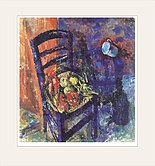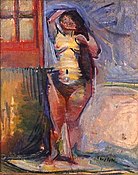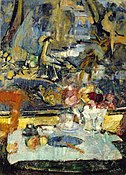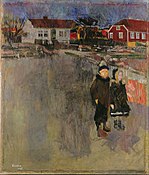
Edvard Munch was a Norwegian painter. His 1893 work The Scream has become one of Western art's most acclaimed images.

Christian Krohg was a Norwegian naturalist painter, illustrator, author and journalist. Krohg was inspired by the realism art movement and often chose motifs from everyday life. He was the director and served as the first professor at the Norwegian Academy of Arts from 1909 to 1925.

Hans Henrik Jæger was a Norwegian writer, philosopher and anarchist political activist who was part of the Oslo -based bohemian group known as the Kristiania Bohemians. In 1886 he was prosecuted for his book Fra Kristiania-bohêmen, then convicted and sentenced to 60 days' imprisonment and a fine of 80 kr for infringement of modesty and public morals, and for blasphemy. He also lost his position as a stenographer at the Parliament of Norway. Jæger was defended in court by barrister Ludvig Meyer. He and other bohemians tried to live by the nine commandments he had formulated in Fra Kristiania-bohêmen.

Åsgårdstrand is a small port town in Horten Municipality in Vestfold county, Norway. The town is located along the shore of the Ytre Oslofjord, about 8 kilometres (5.0 mi) south of the town of Horten, about 10 kilometres (6.2 mi) to the north of the town of Tønsberg, and about 100 kilometres (62 mi) south of the capital city of Oslo. The villages of Borre and Skoppum both lie a short distance northwest of Åsgårdstrand.

Frits Thaulow was a Norwegian Impressionist painter, best known for his naturalistic depictions of landscape.

Nikolai Astrup was a Norwegian modernist painter. Astrup was a distinctive, innovative artist noted principally for his intense use of color depicting the lush landscapes of Vestlandet featuring the traditional way of life in the region.

Hjalmar Eilif Emanuel Peterssen was a Norwegian painter. He is most commonly associated with his landscapes and portraits. He gained early recognition for the history painting Christian II signing the Death Warrant of Torben Oxe and established himself as one of Norway's foremost portrait painters, with portraits of, among others, Henrik Ibsen and Edvard Grieg. He also became known for his landscape paintings, and became part of the artist circle known as the Skagen Painters. He also became known for his design in 1905 of Norway's national coat of arms with the Norwegian lion, which was used by the government and the royal house. The design is still used in the royal coat of arms and the royal flag.
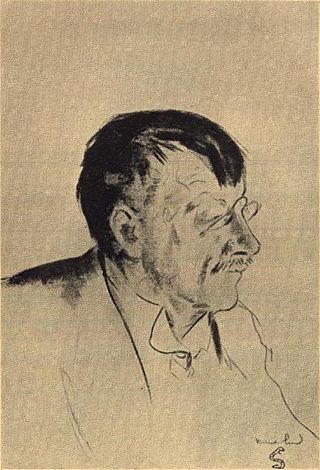
Nils Kjær was a Norwegian playwright, short story writer, essayist, literary critic and theatre critic.

The Stenersen Museum is a Museum of Fine Arts located in Oslo, Norway.

Frederik Ludvig Vibe was a Norwegian classical philologist and educator. He was Professor of Greek language at the Royal Frederick University from 1838.

Eilert Adelsteen Normann was a Norwegian painter who worked in Berlin. He was a noted painter of landscapes of Norway. Normann was the artist who invited Edvard Munch to Berlin, where he painted The Scream. Normann's fjord paintings are credited with making the Norwegian fjords a more popular tourist destination.

Ludvig Cæsar Martin Aubert was a Norwegian philologist.

Inger Wenche Alver Gløersen was a Norwegian smallholder and writer.

Rolf Kristian Eckersberg Stenersen was a Norwegian businessman, non-fiction writer, essayist, novelist, playwright and biographer. He was also a track and field athlete and art collector.

The Blue Kitchen is the title of a neo-impressionist painting by Norwegian artist Ludvig Karsten, showing a kitchen table ready for breakfast, while the morning sun is shining through the window.
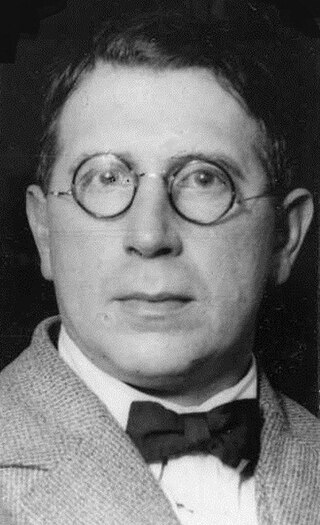
Pola Gauguin was a Danish-Norwegian painter, art critic and biographer.

Arne Kavli was a Norwegian painter.

Hans Olaf Halvor Heyerdahl was a Norwegian Realist painter. His work was characterized by naturalism and focused largely on portraits and landscape paintings.

Inger on the Beach is a painting by the Norwegian artist Edvard Munch. It was created in the summer of 1889, at Åsgårdstrand and is a portrait of Munch's youngest sister Inger.

Jappe Jacob Nilssen was a Norwegian writer and art historian.


